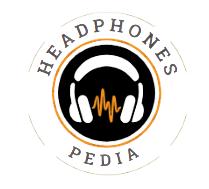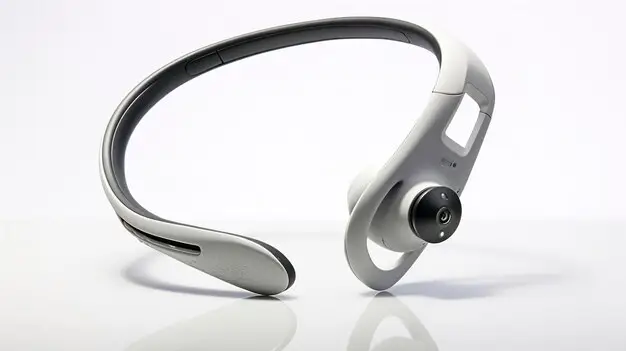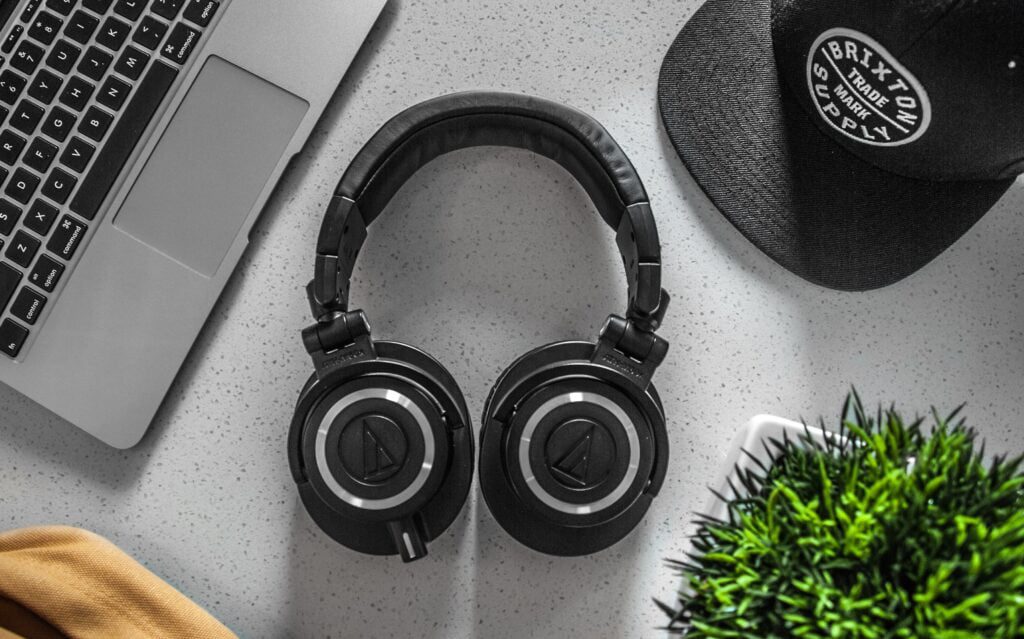Introduction
Tired of bulky headphones muffling your surroundings during workouts? Bone conduction headphones offer a unique technology and meaning to your daily routines, But are Bone Conduction headphones safe ?
Bone conduction headphones are the latest innovation making waves in the audio world. Unlike traditional headphones that block your ears, these high-tech devices rest comfortably on your cheekbones and transmit sound vibrations through your bones to your inner ear. This innovative technology offers a listening experience unlike any other, but a crucial question remains: Are bone conduction headphones safe for long-term use? This article dives deep into the world of bone-conduction headphones, exploring their safety aspects, potential risks, and the many benefits they offer. By the end, you’ll have a clear understanding of whether these headphones are the right choice for enjoying your music without compromising your hearing health.
The Mechanism Behind Bone Conduction Headphones
Bone conduction technology, originally developed for hearing aids, has found its way into the consumer audio market. Unlike traditional headphones that cover or insert into your ears, bone conduction headphones sit just outside your ears. They employ transducers to convert audio signals into vibrations, which are then transmitted through your cheekbones and jawbone to your inner ear.
This mechanism allows you to enjoy your favorite music or take calls while staying aware of your surroundings, making them popular among athletes, cyclists, and individuals with hearing impairments. But, with any emerging technology, questions arise regarding their safety. Even users with impaired hearing experience better sound quality through these unique headphones.
Are Bone Conduction Headphones Safe
- Auditory Health: One of the primary concerns surrounding bone conduction headphones is their impact on auditory health. The vibrations they produce directly stimulate the cochlea, the auditory organ responsible for hearing. Critics worry that prolonged exposure to these vibrations might lead to damage or hearing loss.
A study published by NIH indicates that hearing loss can occur when long or repeated exposure to sounds at or above 85 dBA can cause hearing loss. The louder the sound, the shorter the amount of time it takes for NIHL to happen.
Research conducted in 2023 by Srdan Prodanovic and published in the National Library of Medicine suggests that Bone conduction headphones improve hearing sensitivity, which means we can even hear low-volume sounds, which means that in noisy environments we don’t have to increase the volume of our headphones we can hear the voice on low volume.
As we know these headphones use transducers to convert audio signals into vibrations. These vibrations then travel through your cheekbones and jawbone to your inner ear, bypassing the eardrum altogether. As it is not using our ear drum so there is no pressure on our eardrum, which will be safe as compared to traditional headphones.
- Bacterial Infections: Because bone conduction headphones rest on the skin, there are concerns about bacterial infections, particularly for individuals who sweat profusely during workouts. It’s essential to maintain good hygiene by cleaning the headphones and the areas they touch regularly.
- Comfort and Fit: While comfort is a subjective experience, ill-fitting bone-conduction headphones may cause discomfort or even pain over extended periods of use. Ensuring the headphones fit properly can mitigate the risk of discomfort-related issues.
- Vibration Frequencies: Another safety aspect that often arises in discussions about wearable technology is Vibration frequencies. Bone conduction headphones, work by vibrating the bones of the skull, and hearing through these vibrations is called bone conduction. Research conducted by Mingduo Zhou in 2021 indicates that vibrations produced by bone conduction that produce a sensation in the inner ear are not strong enough and cause no threat to the brain.
Benefits of Bone Conduction Headphones

While safety concerns are essential, it’s crucial to acknowledge the benefits that bone-conduction headphones bring to the table.
- Awareness of Surroundings: Unlike traditional headphones that isolate you from the environment, bone conduction headphones allow you to enjoy music or take calls while remaining aware of your surroundings. This feature is particularly valuable for outdoor activities, urban commuting, and safety-conscious individuals.
- Hearing Impairment: Bone conduction headphones can be a game-changer for individuals with certain types of hearing impairments. By bypassing the eardrums and directly stimulating the inner ear, they can provide improved auditory experiences for those with conductive or mixed hearing loss.
- Comfort during Physical Activities: Active individuals often struggle with traditional headphones falling out during workouts. Bone conduction headphones eliminate this issue by staying securely in place during movement. A study published in Sage Journals did a comparison of the entertainment levels one can get from conventional earphones and bone conduction earphones and found that both provide the same level of entertainment but bone conduction earphones give more situational awareness than conventional earphones. These analyses show wearing advanced BCE can be an option to meet both entertainment and safety purposes for people who enjoy outdoor activities
- Versatility: From conducting business calls to enjoying music on a run, bone conduction headphones offer a versatile audio solution for various situations.
- Ear Comfort and Hygiene: No ear canal blockage means no discomfort or risk of earwax buildup often associated with in-ear headphones.
Conclusion
The safety of bone-conduction headphones is a topic that demands careful consideration, especially as these innovative devices become increasingly popular. While concerns about auditory health and hygiene are valid, the available evidence suggests that, when used responsibly, bone-conduction headphones are generally safe.
As with any technology, moderation and adherence to guidelines are key. If you decide to embrace bone conduction headphones, be mindful of the volume levels, cleanliness, and fit. These precautions can help you enjoy the unique benefits they offer while minimizing potential risks.
In a world where technology continually pushes boundaries, bone-conduction headphones stand as a testament to human ingenuity. By understanding their mechanisms, benefits, and safety considerations, you can make an informed decision about whether they are the right choice for your auditory needs. Remember, your hearing health is a priority, and responsible usage should always take precedence.

I am Michael a Texas-based recording engineer and sound enthusiast. I contribute to Headphones Pedia’s efforts to educate readers about intriguing new devices and other audio-related issues by drawing on their experience working on several sound projects. I also use AI tools to assist with content creation.




